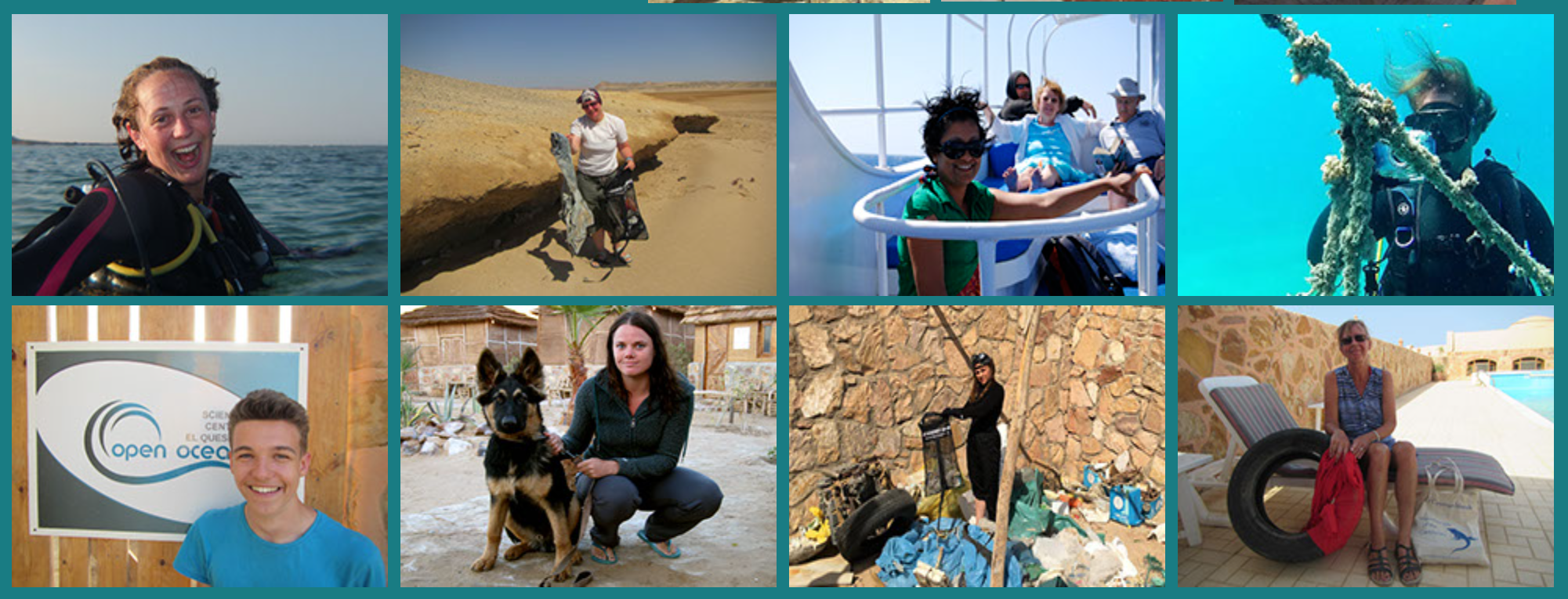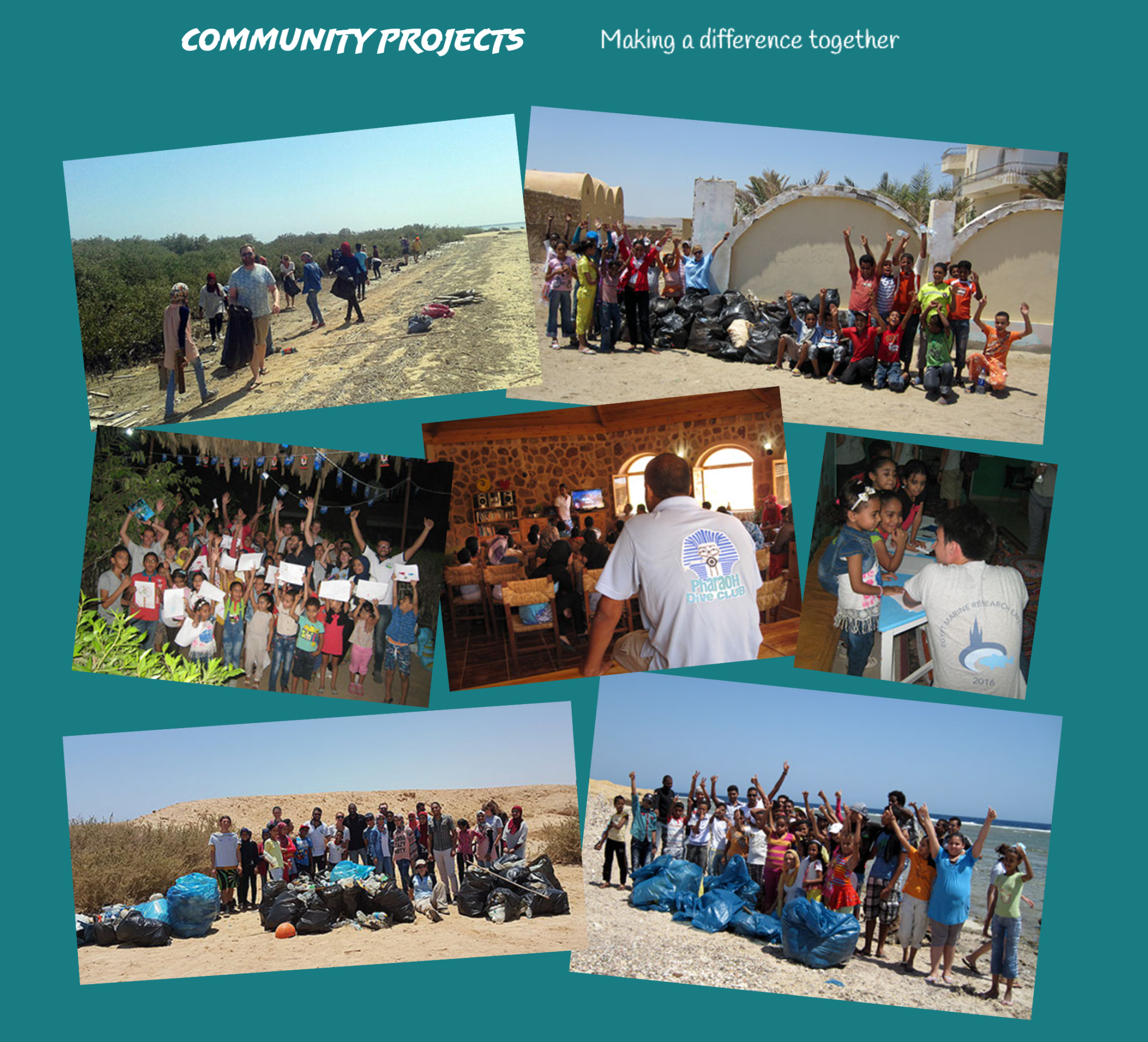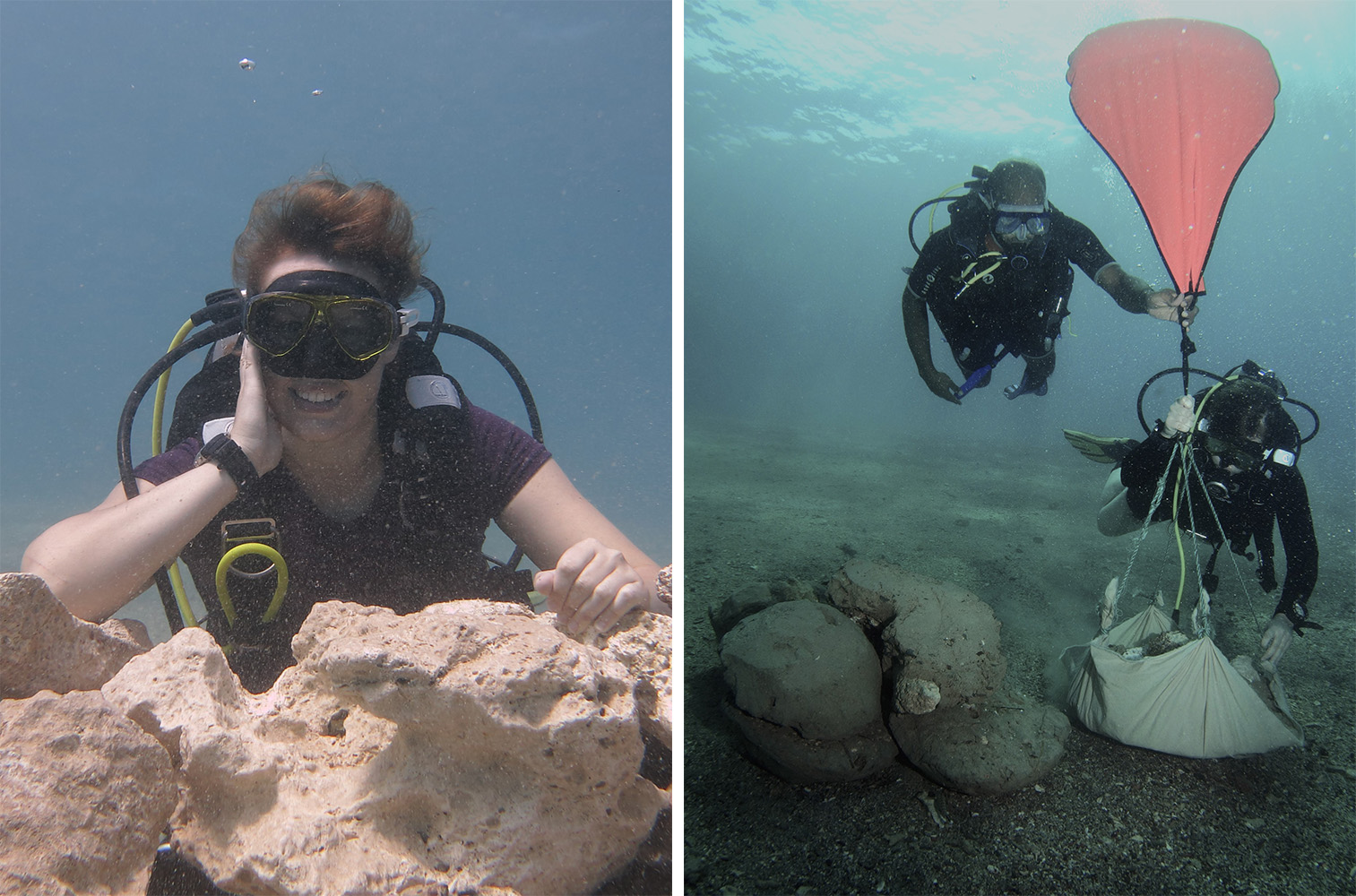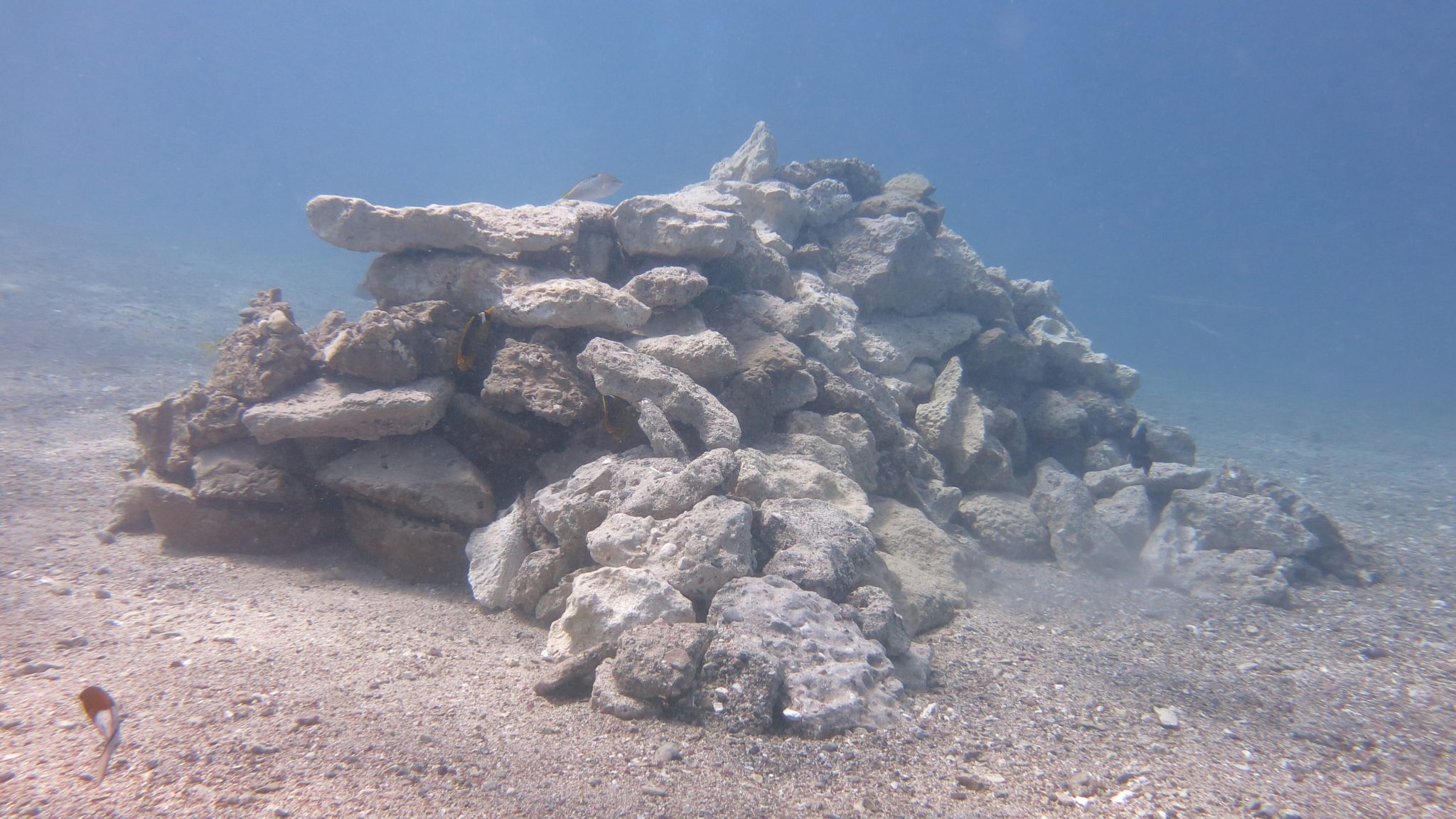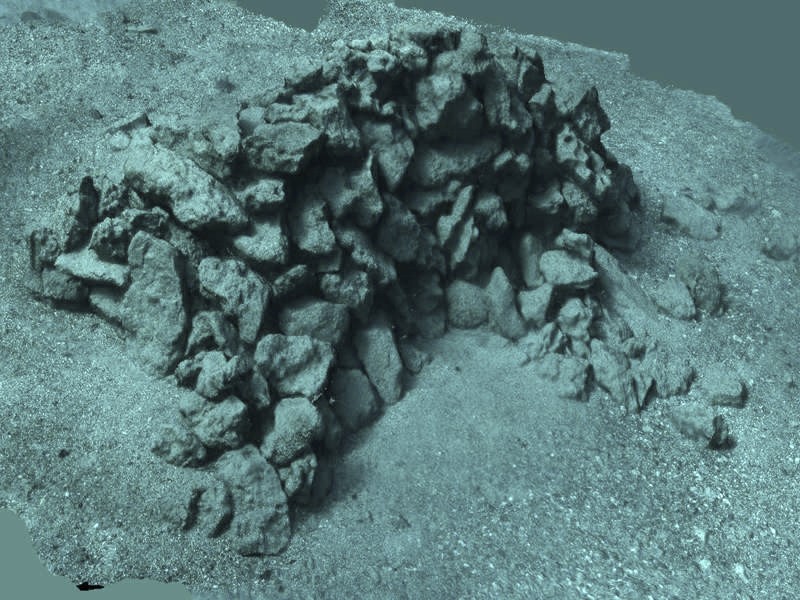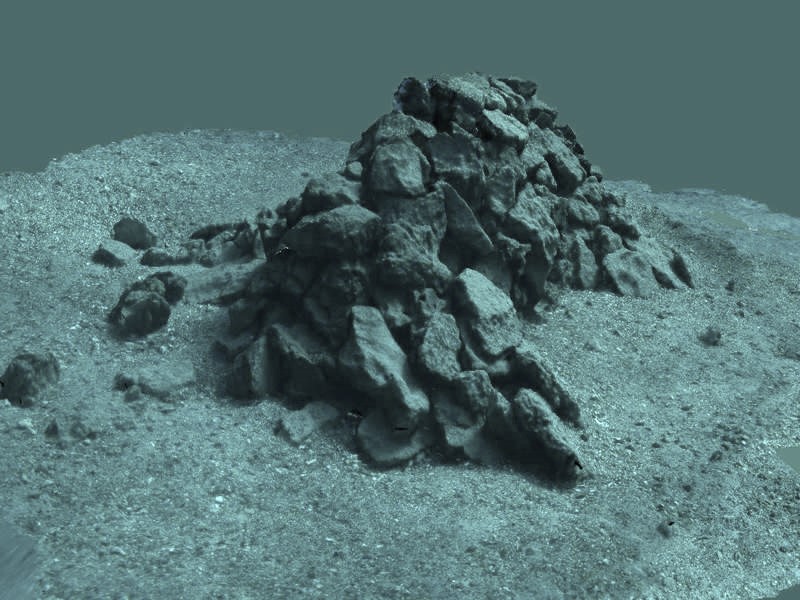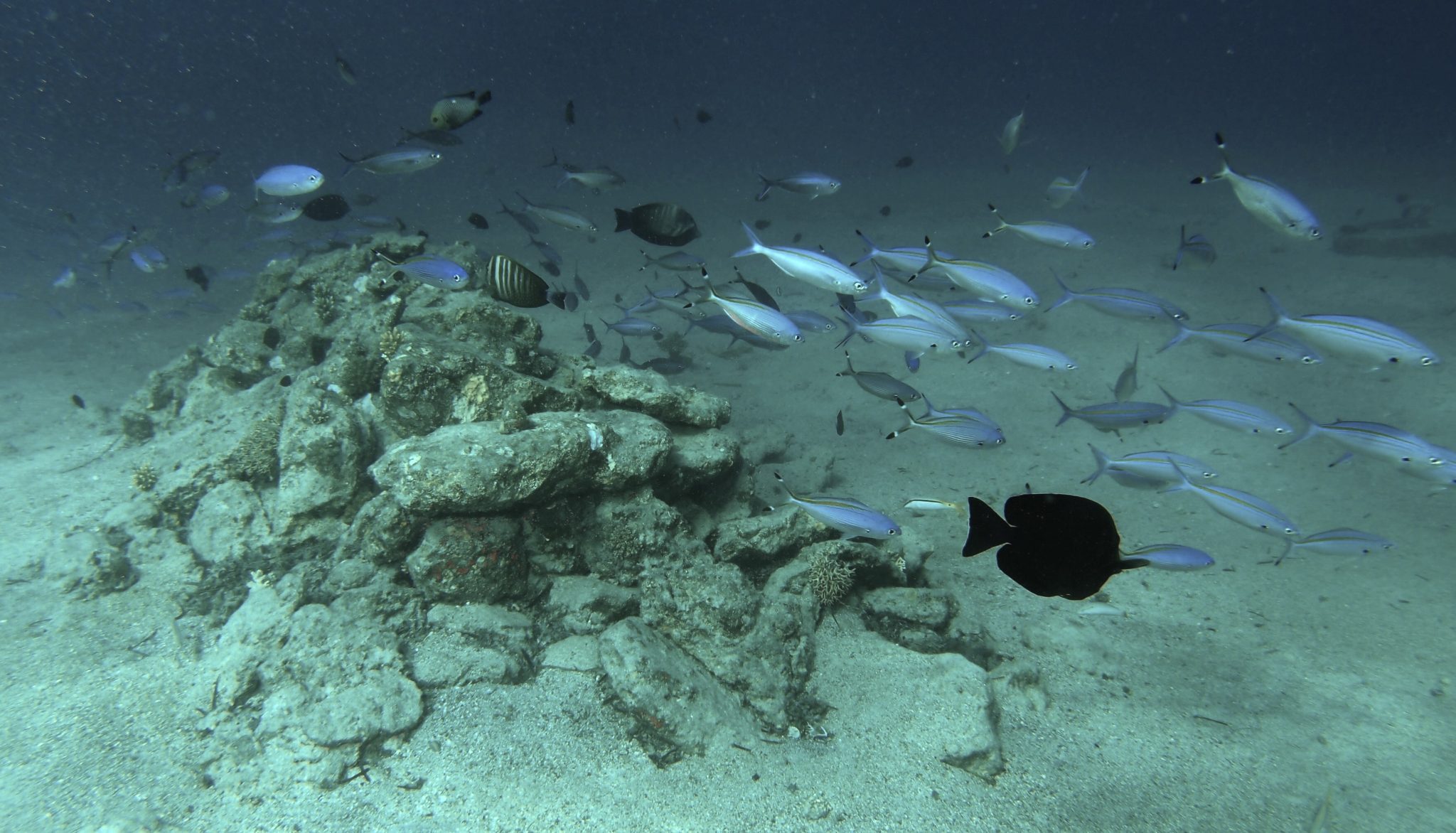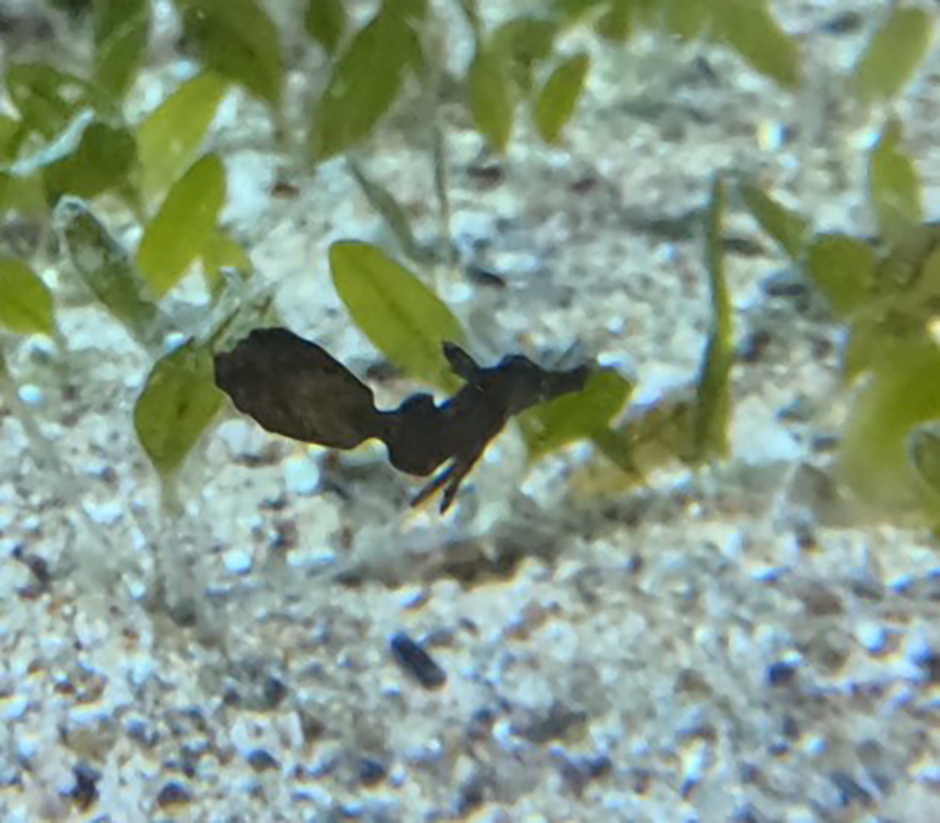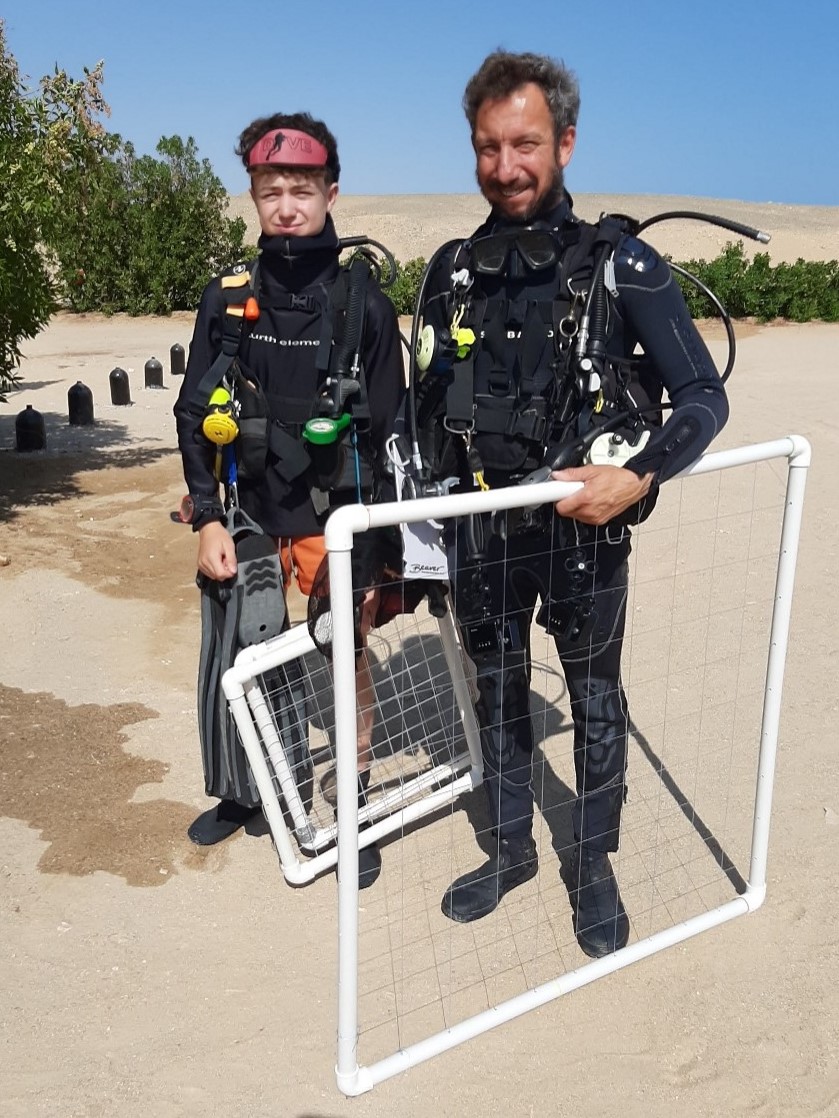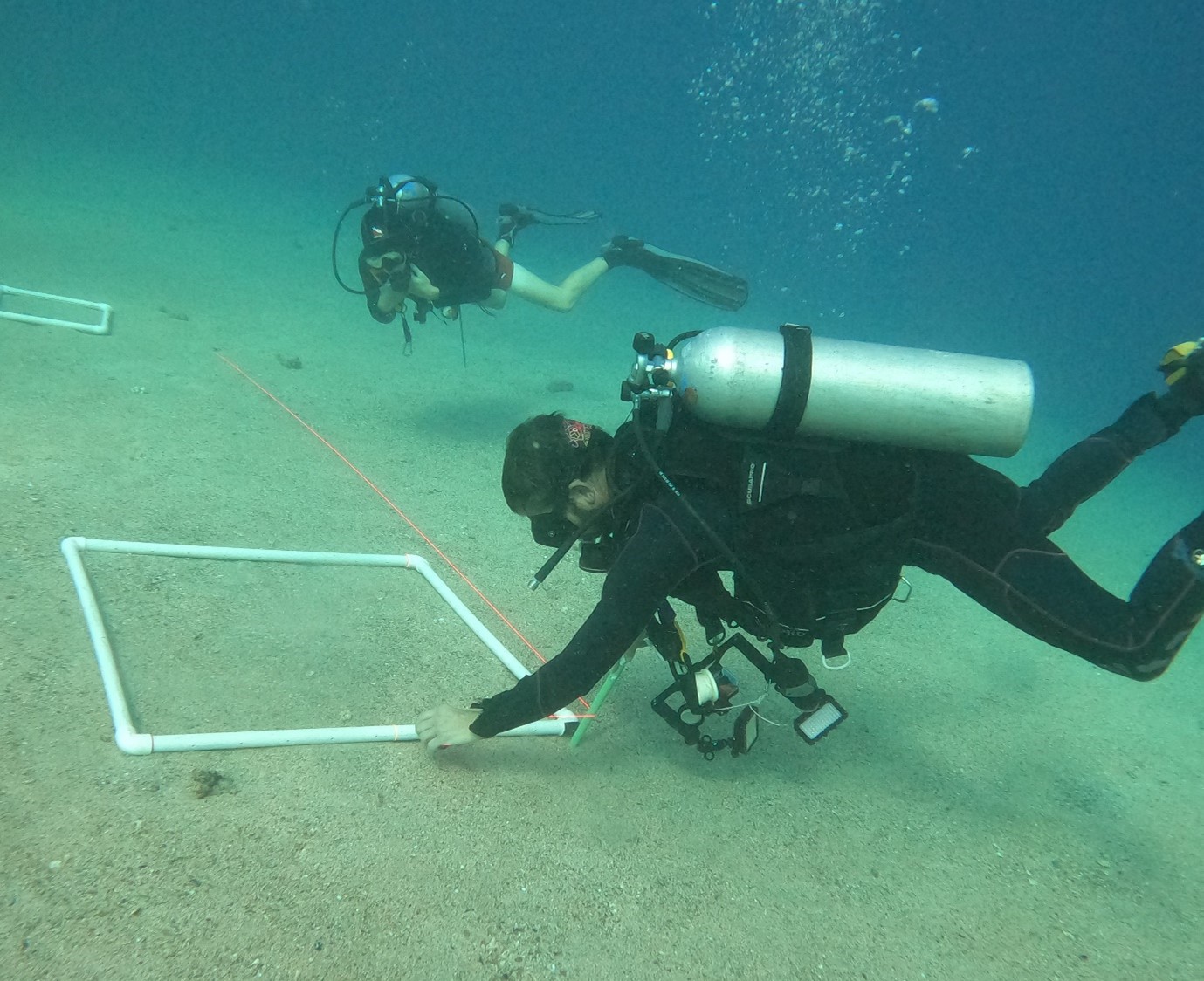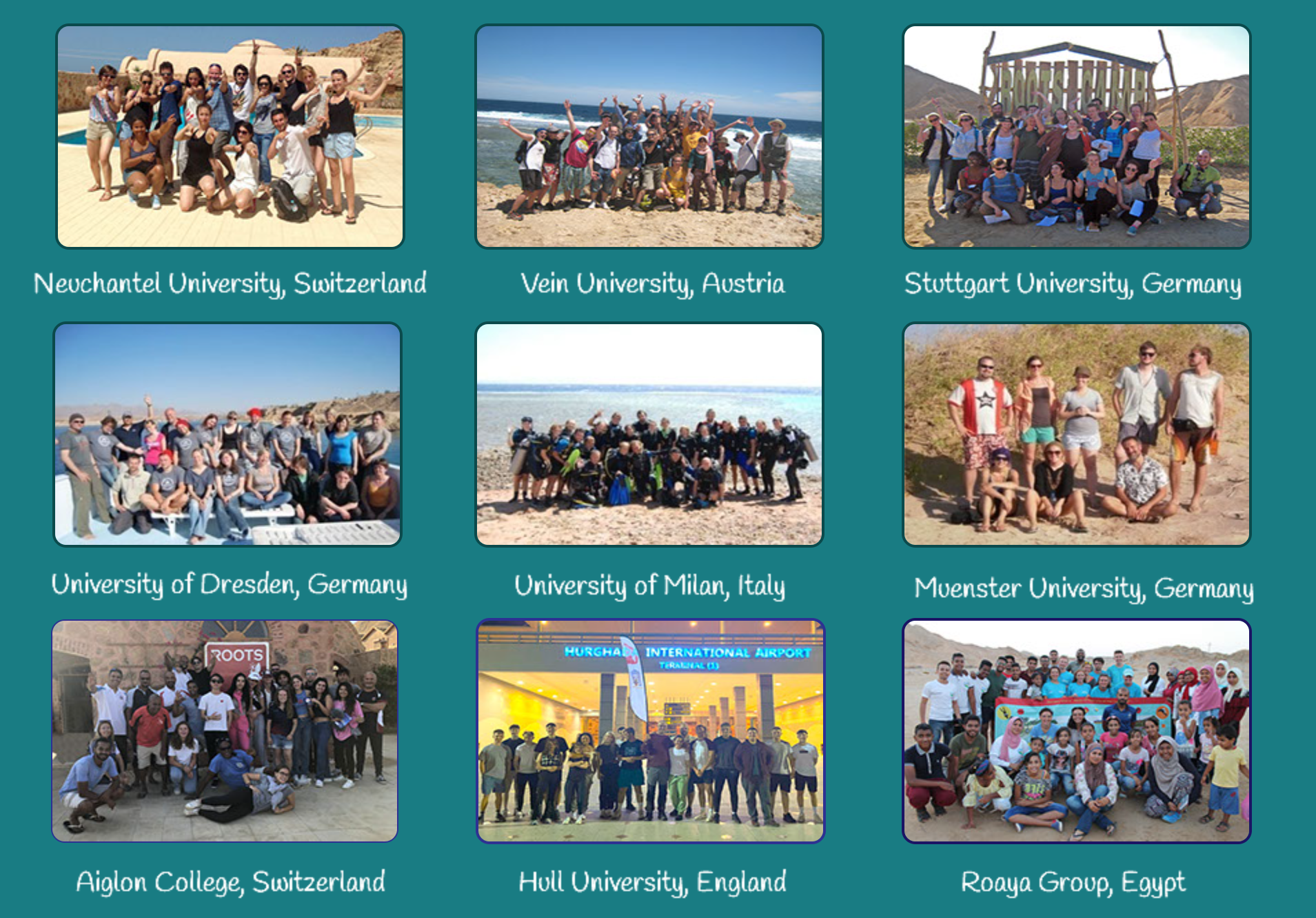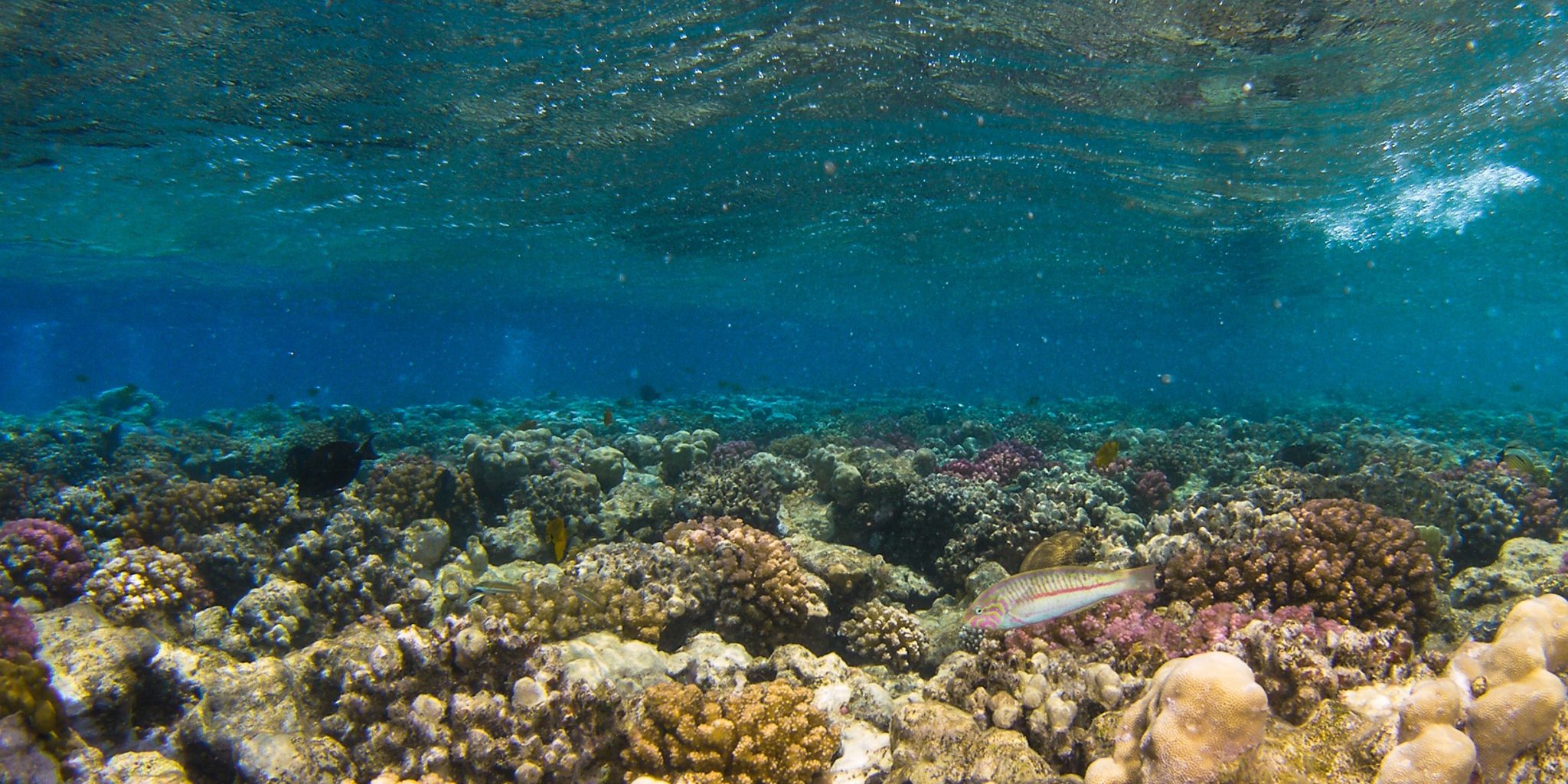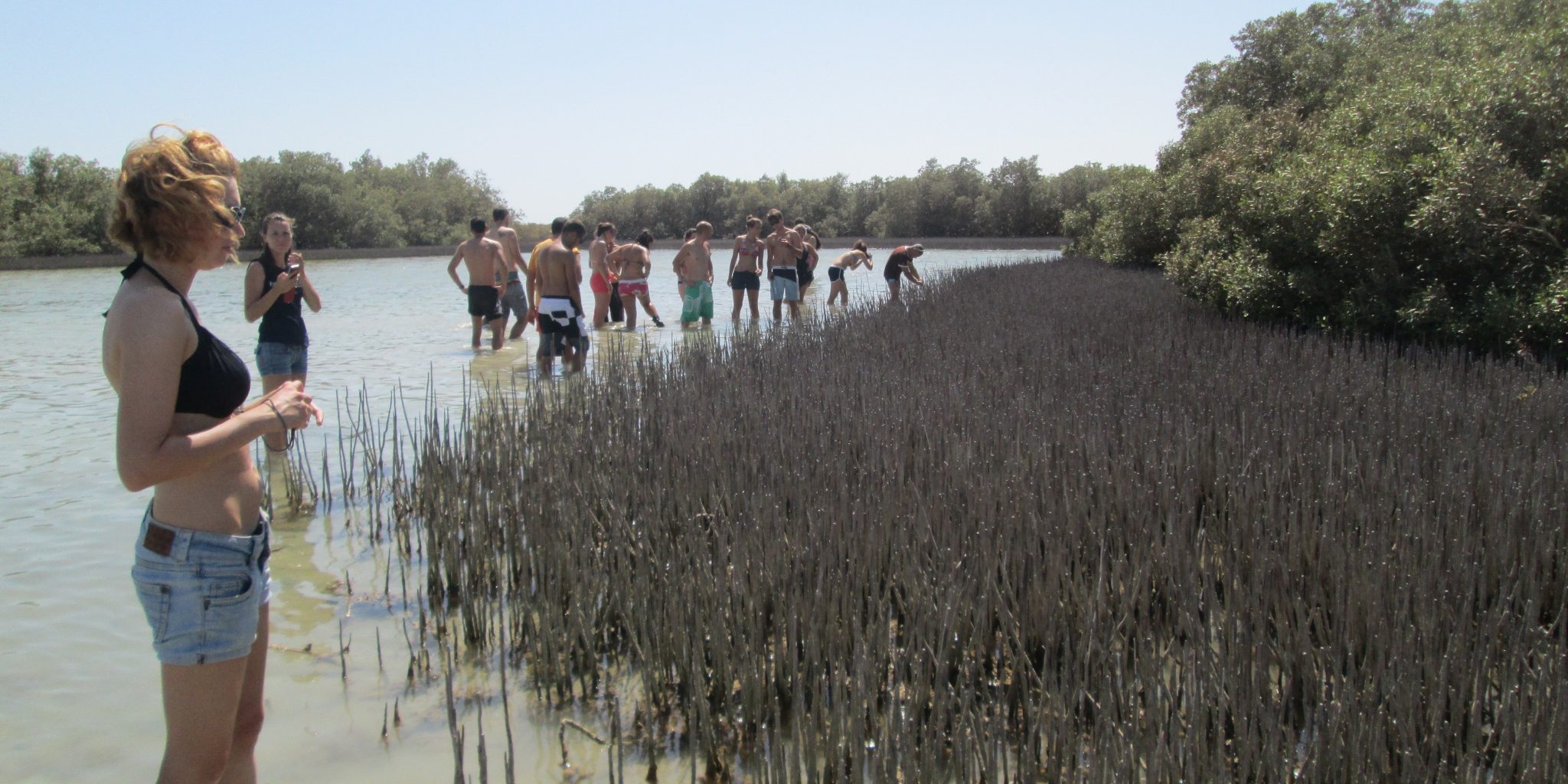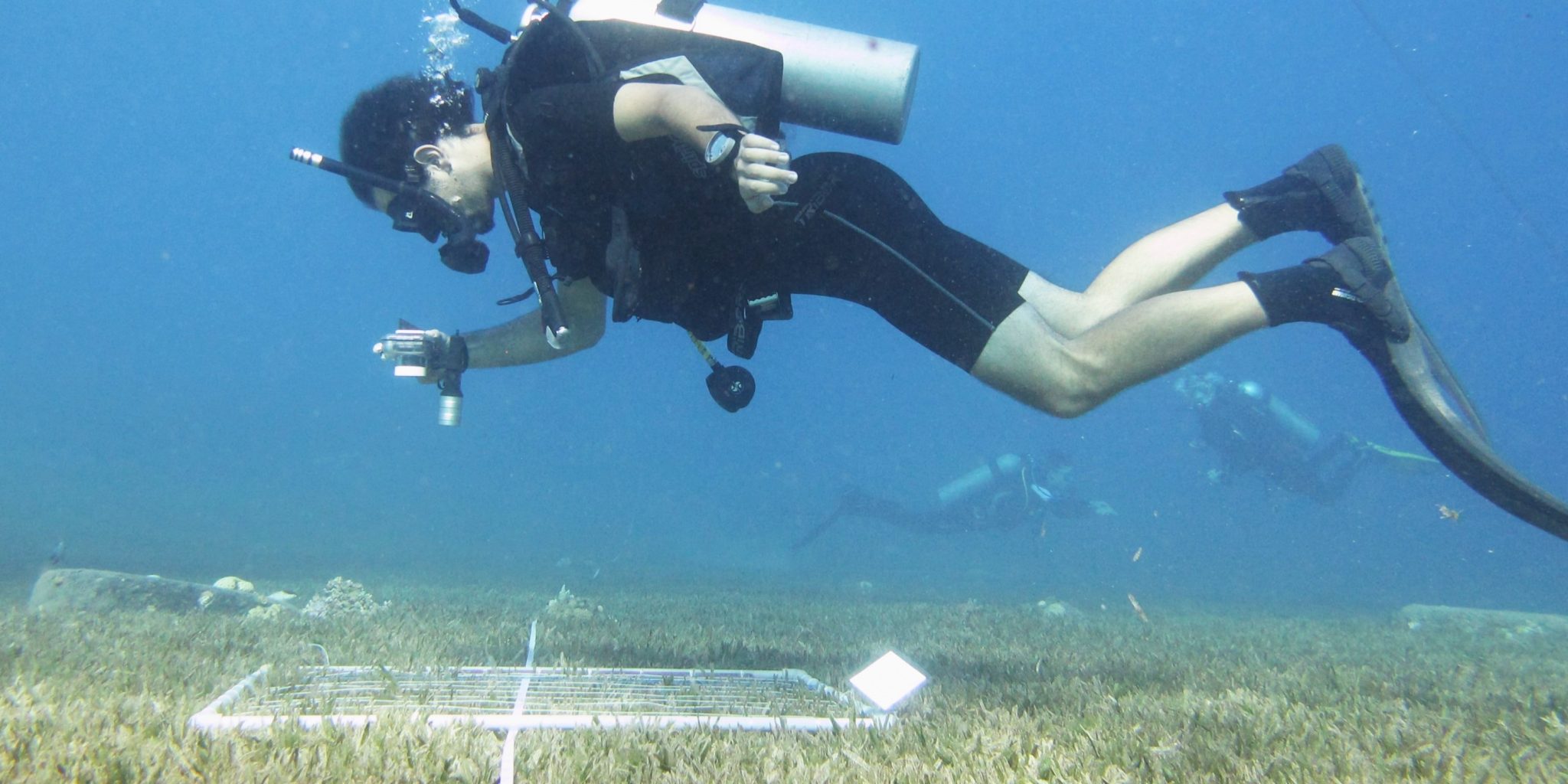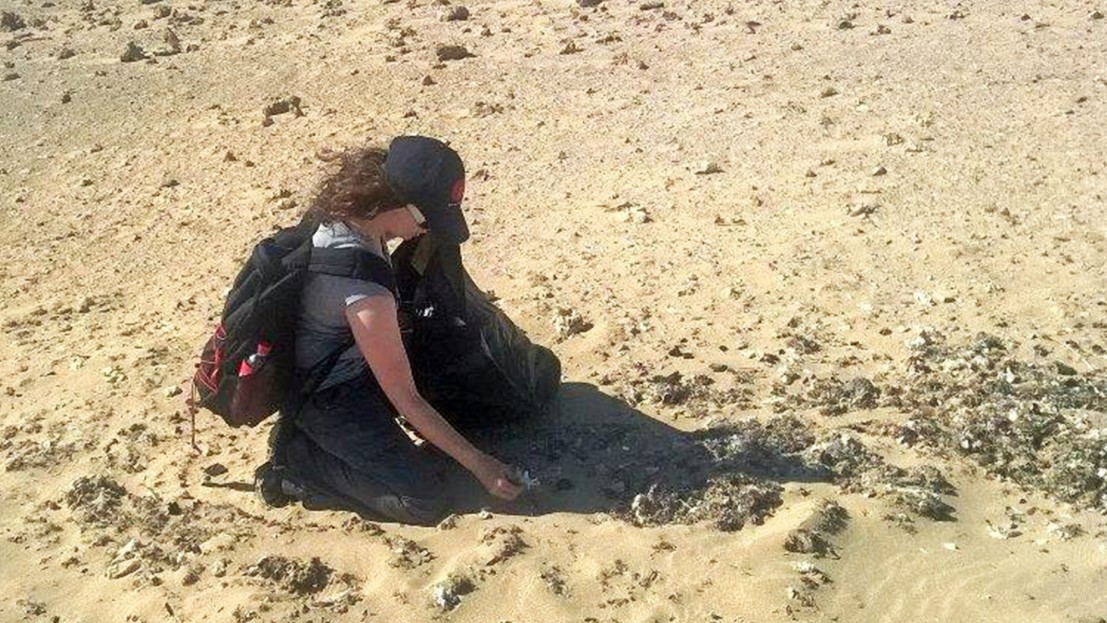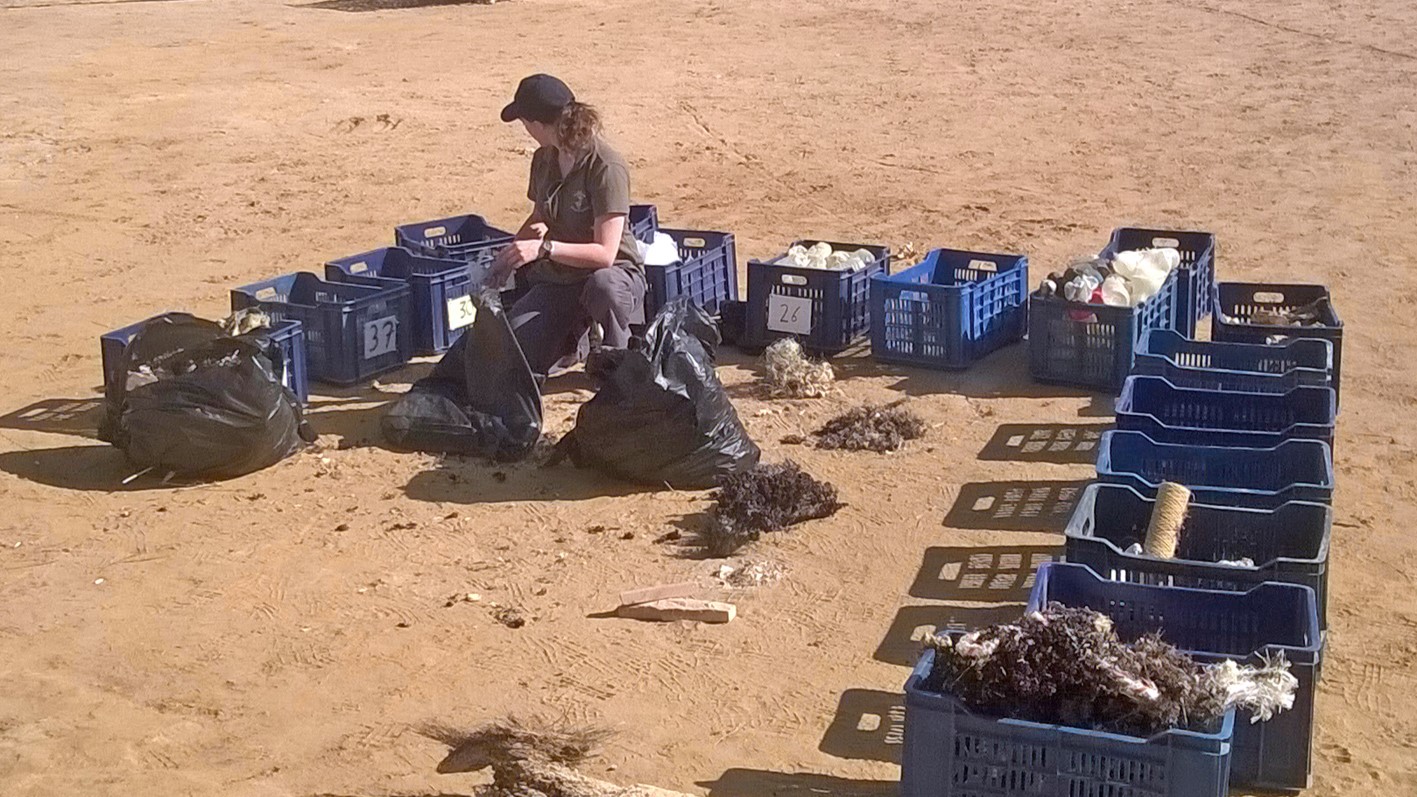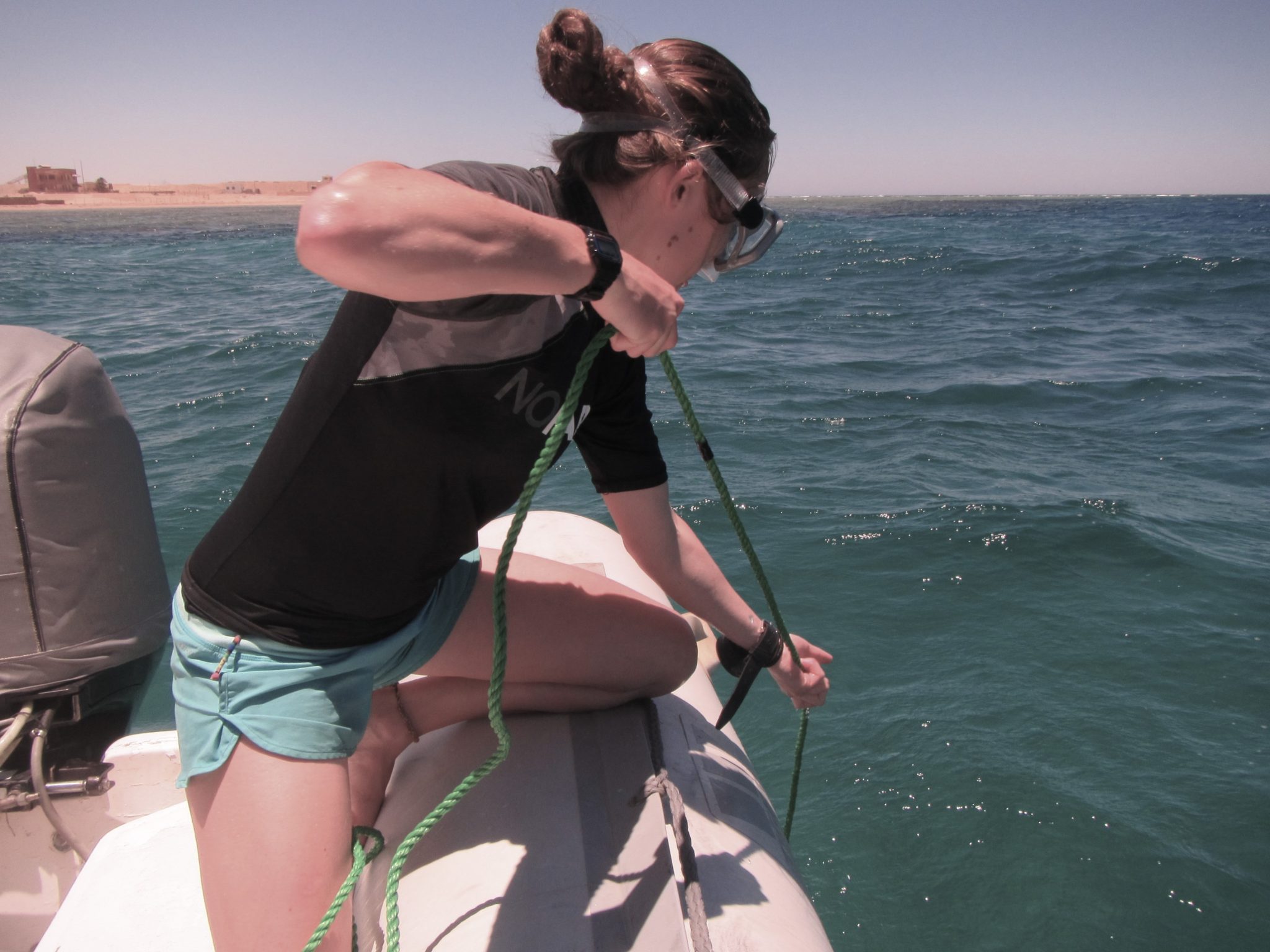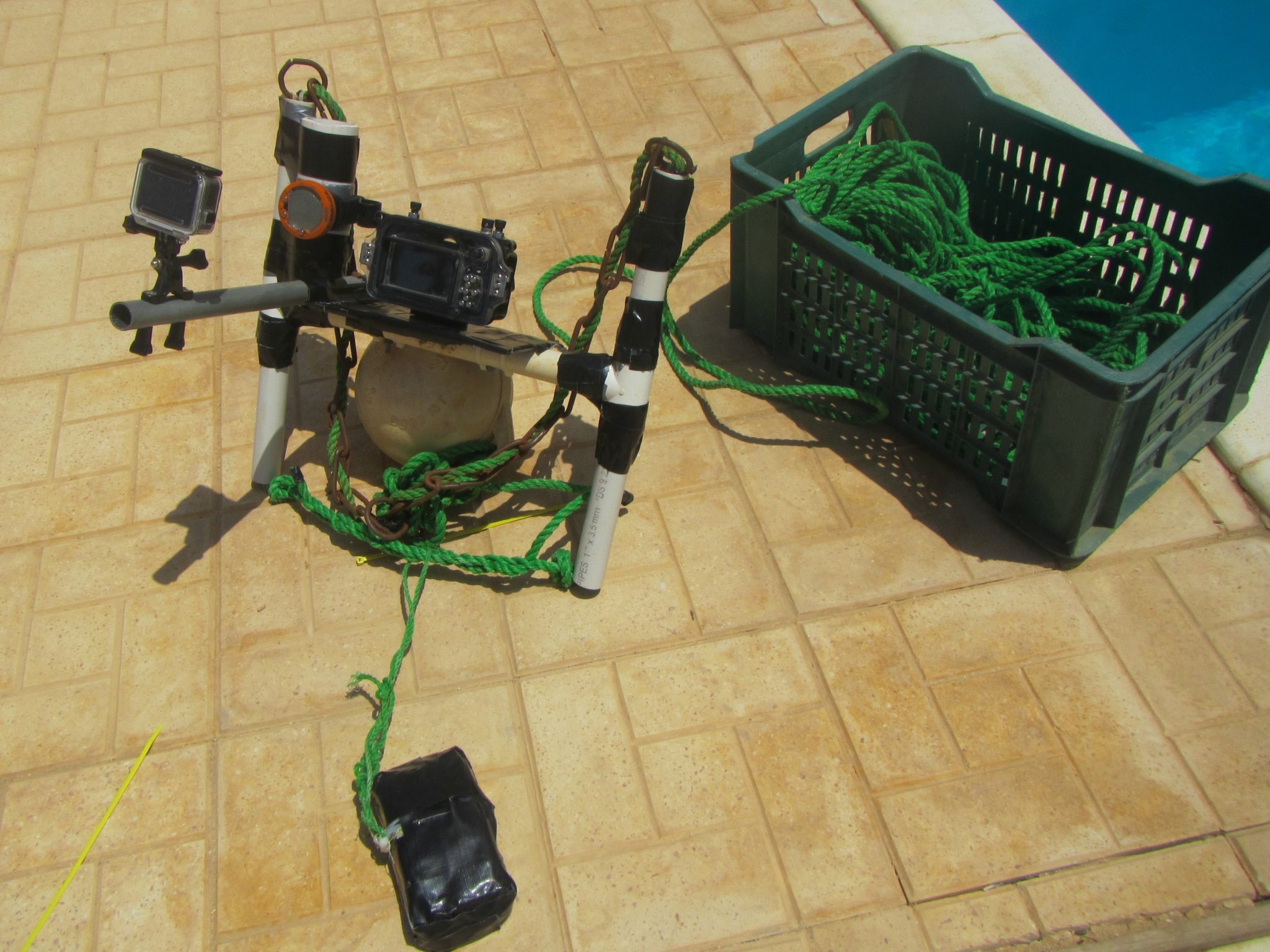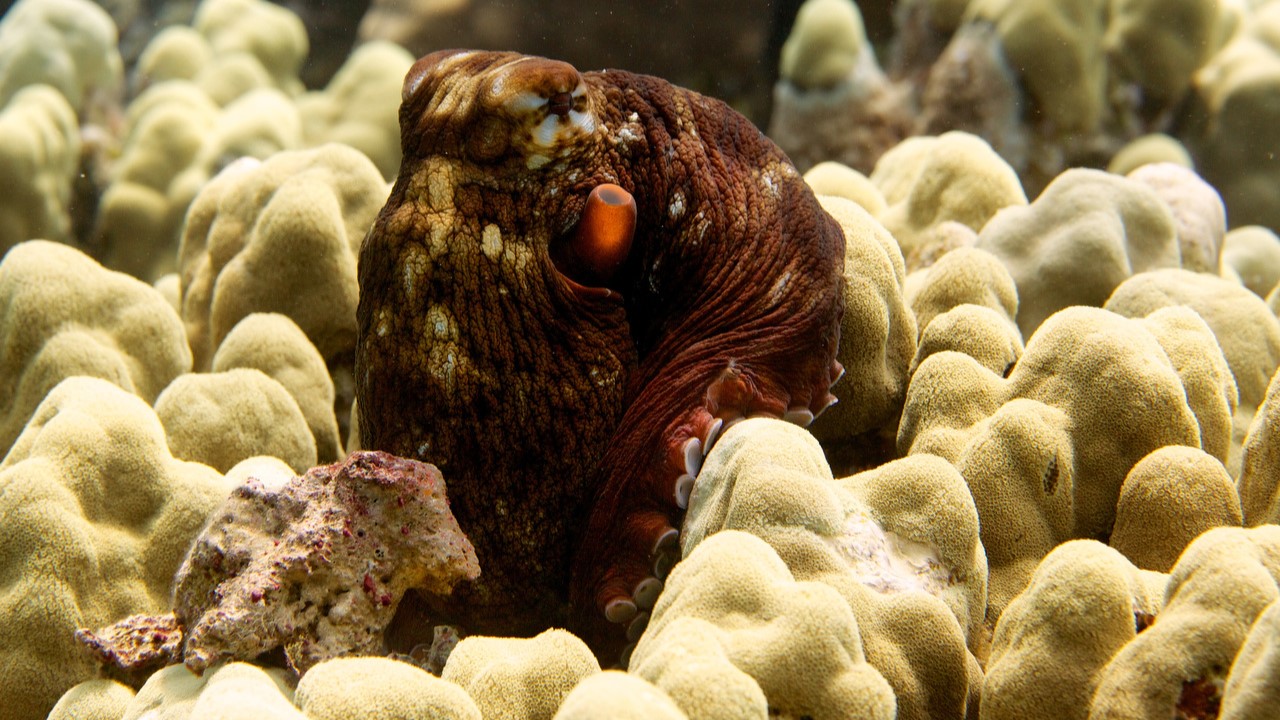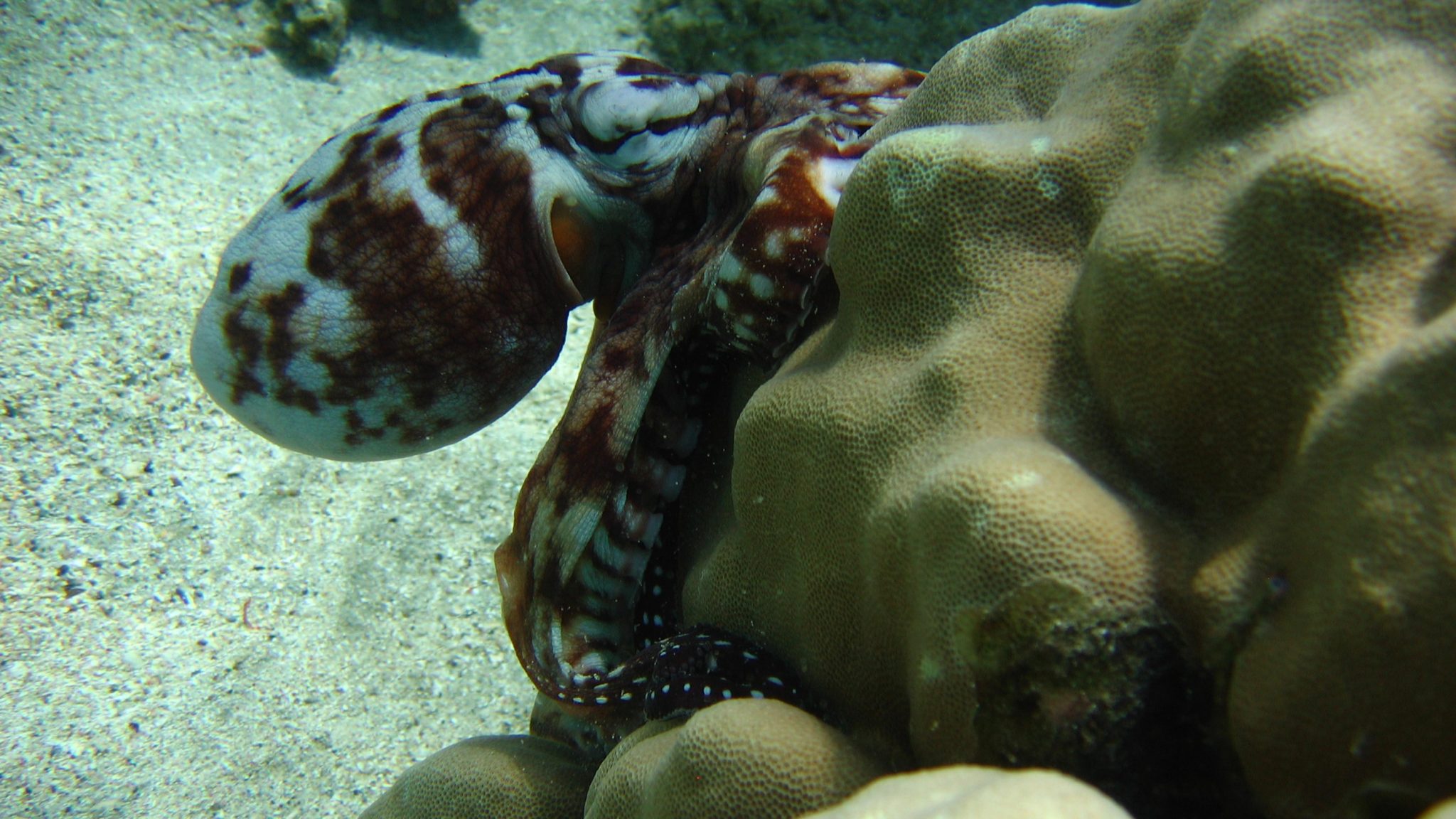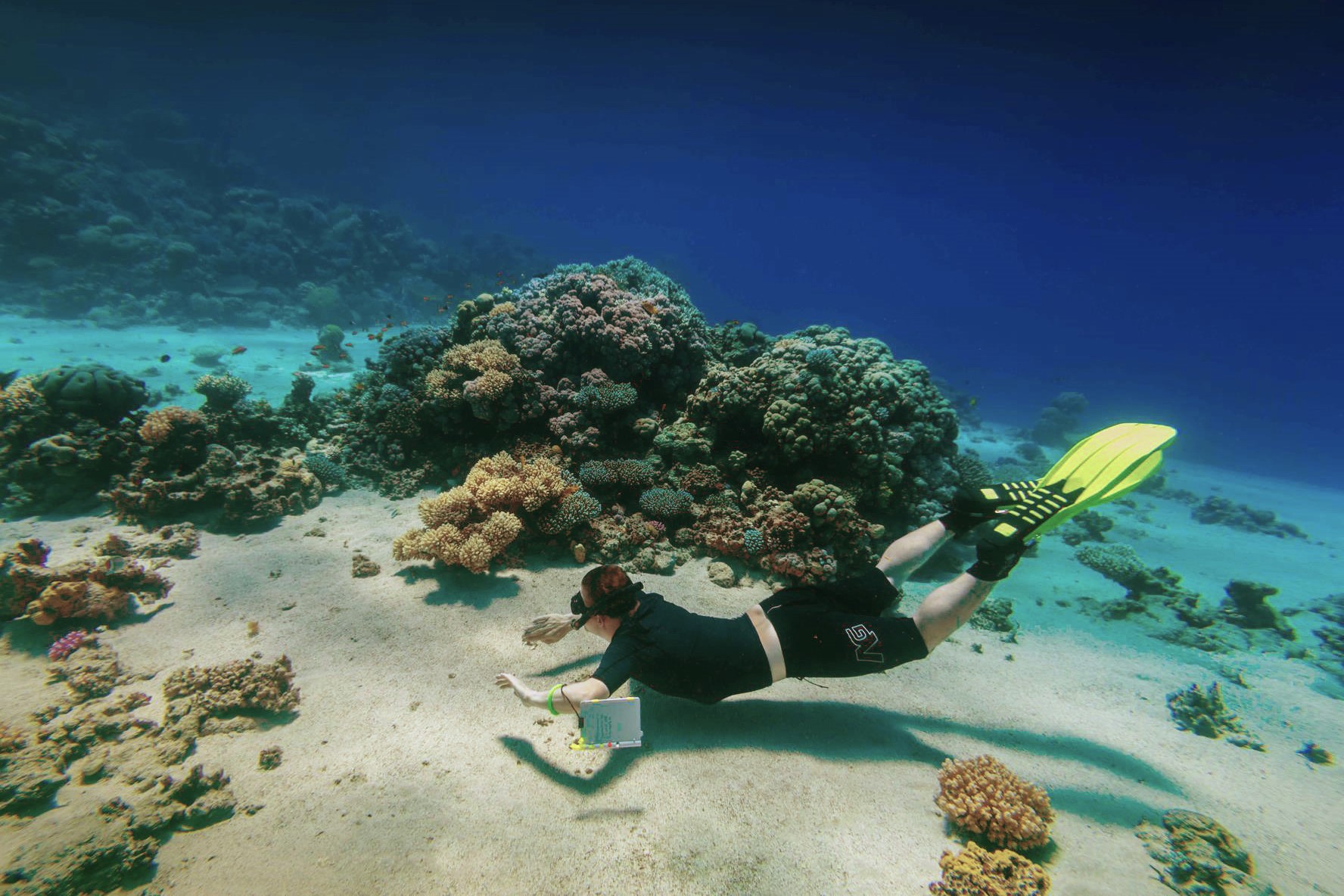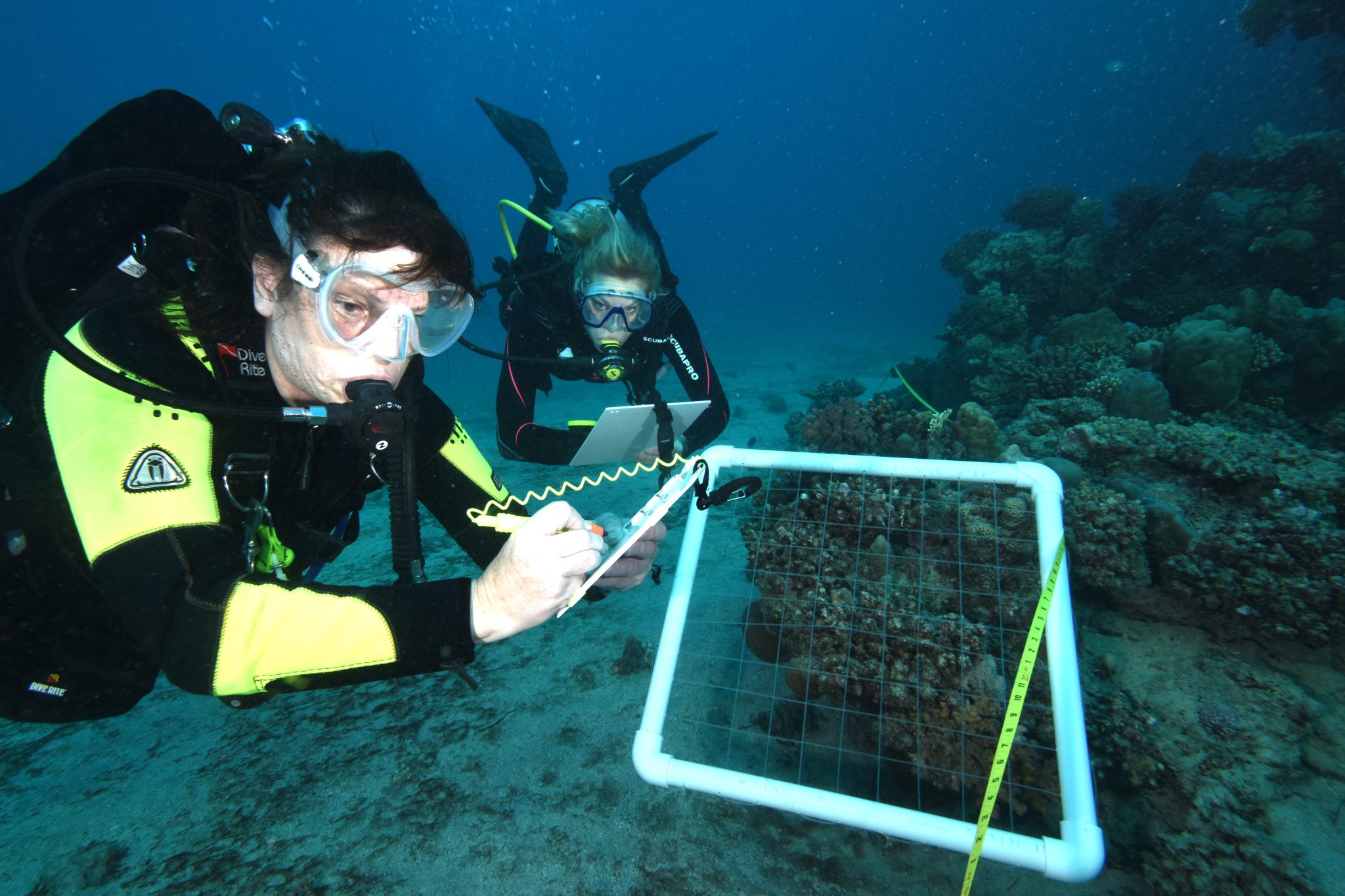Blogs
Open Ocean: a not for profit NGO marine field station in the Red Sea
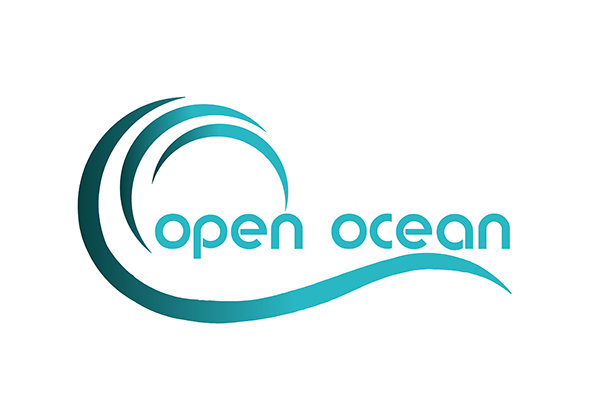
Providing services for universities, researchers, interns, schools, divers, volunteers and conservationists
Open Ocean was established in 2010 to provide a not for profit NGO field station in the Red Sea for academic facilities and divers in general. Founder Hans Lange could not have dreamt how well received his vision would be.
Things truly took off in 2012 when Hans joined forces with Pharaoh Dive Club and Roots Red Sea to establish a totally self-contained field station near El Quseir at their remote coastal desert outpost surrounded by a phenomenal array of marine habitats and an abundant natural resource to study.
The academic interest in the Research and Education opportunities coupled with the simplified logistics of being a complete package proved a great move for Open Ocean and the academic facilities that have been drawn to the field station.
At El Quseir the focus was on Volunteering with residential programmes providing opportunities to get involved in many aspects of life in rural Egypt, in various fields such as Environmental Conservation, Citizen Science Projects, and Local Community Interactive Relationships.
Open Ocean has welcomed numerous volunteers to the programme from all walks of life and all demographics.
Volunteers are very much hands on with whatever activity is running, including:
Environmental Conservation
Organising beach and reef clean ups; sorting of and collating data on the collected debris; appropriate recycling and disposal of the collections.
Community projects such as maintenance and refurbishment of local schools.
Providing conservation education sessions with practical events for the local children and environment groups.
Contact Open Ocean at info@openoceanproject.org
Citizen Science Projects
There are various ongoing Citizen Science Projects running at Open Ocean and every visitor is encouraged to get involved during their stay. Volunteers take a variety of roles within these projects, collecting data directly through surveys or indirectly collating other participants’ data at the end of the day. If suitably qualified, they can also get involved with establishing and running their own projects.
There are various opportunities to get involved such as Turtle Watch or the Shark Trust‘s survey which are simply reporting your sightings from your dives through to full project developments such as Fern’s Reef and the Sea Grass Survey.
Fern’s Reef
In August 2016, Open Ocean established a virgin artificial reef with sterile substrate to monitor and research the colonisation of the new structure. The lead on the project was Fern and the resultant reef is known as Fern’s Reef.
Contact Open Ocean at info@openoceanproject.org
The structure required bringing in from the shore 500 pieces of fossilised coral bed, formed into a random shaped metre high barrier in a depth of 8 metres with a sand bed and a relatively good tidal flow.
On completion a photo telemetry image was produced to establish a 3D base model record. After just a short period of time, signs of emerging life were noted and after just 6 months there were numerous corals taking a foothold with numerous fish inhabiting different areas of the structure.
This is an ongoing subject of observation and study, one that every visitor takes great interest in as it is now a thriving young live reef. Those with a more scientific outlook also note the distinct changes in topology around the reef, generated by the tidal flow and sand substrate movements. The Open Ocean team are on hand to provide a guided view of the everchanging project.
Contact Open Ocean at info@openoceanproject.org
Sea Grass Survey
The latest Citizen Science Project has been established by Open Ocean: a Sea Grass Survey. The team noticed that a patch of sea grass had begun to form a small meadow in the bay, which raise several questions for research and study. Why has it appeared? How has it seeded itself? What species of grass and algae are there? What aquatic life will make use of the new habitat? And so much more.
Two volunteers were assigned the task to establish the sea grass project; Gerald Taylor and his 13-year-old son, Finlay. Both had the prerequisite diving skills – Finlay in fact, despite his age, came to Roots with 100dives already under his belt.
A month-long exercise at Roots would give Finlay, who has an exceptionally keen interest in the underwater world, real life experience living and working in a foreign country, and an understanding of marine biology project work. Coupled with the project, Finlay worked with the marine biologists at Open Ocean carrying out fish and coral ID and measuring / monitoring techniques.
The initial objective of the project was to measure the perimeter / extremities of the sea grass within the bay and to gain an understanding of its shape, distribution and density.
Contact Open Ocean at info@openoceanproject.org
Together Gerald and Finlay formulated by which they were measure the perimeter of the sea grass. They then undertook land-based measuring techniques using 50 meter transects and quadrats, with the full knowledge that stretching a tape underwater to a distance of nearly 50 meters would have its own complications. Armed with their method, Gerald and Finlay set out to map and record the area taking a fixed point location to set the datum.
If you would like to follow the process that they adopted and see how the project developed, you can read Gerald’s summary here.
Meanwhile, alongside the volunteering activities, the grassroots Research and Education activities at Open Ocean have a very impressive, ever growing academic client list with numerous top facilities making regular visitors for both field courses and research projects.
That’s due to Open Ocean’s aim to satisfy researchers’ needs and requirements by providing and ideally located field station with modern research facilities as well as advice and support in administrative and organisational matters.
Contact Open Ocean at info@openoceanproject.org
The Open Ocean Field Station offers direct access to the Red Sea at both the house reef, Abu Sauatir, and nearby dozens of reef sites, along with other local habitats of interest including mangroves, sea grass meadows and fossil reefs.
Find out more about what is available at Open Ocean Field Station with a short presentation here.
Research Opportunities
It’s not just the field study groups that frequent the field station; it’s an ideal location for individual study and research projects. here are a few examples of unique studies.
Micro Plastics
Lucy Deans took up a six month placement with Open Ocean in 2016 during which time she completed an amazing amount of conservation work with the assistance from the volunteers and staff. In addition to her paper on microplastics in the sea bed, she endlessly battled with debris from land and sea, collecting, sorting and collating data for her own and other projects.
Contact Open Ocean at info@openoceanproject.org
Camera Drops
The vast majority of study of the oceans is coastal exploration of the shallow depths from the surface to 20m. Over the past few years the Glasgow University students having been completing summer project work and have been completing camera drops extending this study from 60m to 100m. It’s another example of the range of opportunities that are available from the Open Ocean Field Station.
Contact Open Ocean at info@openoceanproject.org
National Geographic Octopus Study
In 2019, the Open Ocean Field Station provided Eduardo Sampaio the perfect Red Sea for his continued National Geographic funded research on cephalopod behaviour, cognition and neuroscience. His team spent 10 weeks on location recording the incredible behavioural repertoire, camouflage capabilities and complex cognition. View Eduardo’s publication.
Survey and Marine ID Courses
In recent years there has been a steep increase in school participation at Open Ocean generally taking advantage of the Open Ocean Survey and Marine ID Courses giving the students insight into the spectacular aquatic environment. The courses can be conducted for snorkellers or divers.
There is a range of Open Ocean Marine ID Courses for all ages and levels, whether it is young children beginning their voyage of discovery or experienced marine enthusiasts.
Contact Open Ocean at info@openoceanproject.org
If you are looking for a new expedition base for your school with an educational background, view our Open Ocean Prospectus for schools here.
Meet the Team
The engine room of Open Ocean are the enthusiastic dedicated team who simply love to talk about the wonders of the marine environment, particularly the Red Sea at El Quseir.
Resident Marine Biologist marc leads the team at the station, ably supported by our Intern Tierra, who provides great support.
Alongside is Sammie who takes care of the volunteering activities and is liaison with the local community. Currently Sammie is working with Rose who is out volunteering while developing her diving skills and certifications. Rose has completed her RAID Rescue and is and is about to start the RAID Divemaster.
Contact Open Ocean at info@openoceanproject.org
They’re not alone though; our consultant Marine Biologist, Dr Deb with her 12 years of field courses at El Quseir, provides vastly experienced guidance and support.
If you are interested in coming out to be a part of the Open Ocean team, here is what just a couple of volunteers have to say:
Contact Open Ocean at info@openoceanproject.org
Blogs
Alonissos: The complete diving destination (Part 1)

In June we were incredibly fortunate to be invited to dive in Alonissos, a small Greek Island in the Sporades island chain located in the North Aegean Sea. While I have long been a big fan of the Greek Islands as a great holiday destination, I had not had the opportunity to do any diving on previous visits and Mike and I were extremely excited to see what Alonissos had to offer both above and below the surface!

The Sporades are easily accessible via the airport in Skiathos (the first island in the chain), which is served by Jet2 flights from all major UK airports from May through October. Numerous ferries and charter boats make island hopping from Skiathos Town a breeze. After an hour boat ride, the picturesque port of Patitiri was a wonderful introduction to Alonissos, where we were met by our gracious hosts Kostas of Albedo Travel and Dias of Alonissos Triton Dive Center. Mike and I were delighted to be staying at the Paradise Hotel, aptly named for its stunning views over the sea and great location for walking to the waterfront.

Alonissos is beautifully situated in the National Marine Park of Alonissos and the Northern Sporades, the largest marine protected area in Europe. The surrounding seas offer fabulous marine life, including incredibly rare species such as the Mediterranean monk seal. They boast deep walls covered in gorgonians and sponges, stunning topography with caverns, swimthroughs and pinnacles, and the first accessible ancient shipwreck from 500BC!

In locations where historical sites have been reported, the waters are largely restricted, but with collaboration between government, underwater archeologists and dive centres, incredible underwater museums are being created for a truly unique diving experience. Alonissos is home to the first of these, the Ancient Shipwreck of Peristera Accessible Underwater Archeological Site. The chance to dive into history (along with reports of healthy reef life and amazing underwater topography) meant Mike and I were keen to get in the water.

Our introduction to the diving around Alonissos was at the Agios Georgios Pinnacles, in the channel between Alonissos and Skopelos. This fantastic site was named “The Chimney,’ and proved to have a huge amount to see. We got to a decent depth here (over 25m), and marvelled at a colourful reef wall with a wonderful swim through whose rocky walls were absolutely covered with life. As well as brilliant topography there was no shortage of macro life here. We saw numerous nudibranchs, five different species in total. The second dive at Mourtias reef nearby was a shallower dive along a nice wall with lots of crevices. Several moray eels and grouper called this site home. We enjoyed looking in the crevices for lobster and smaller benthic life, such as cup corals and tunicates.

Our itinerary allowed us two dives a day with afternoons left to explore the island with our hire car and evenings to enjoy the famous Greek hospitality. This proved to be a lovely mix of in-water and land based diversions.

The next days diving to the Gorgonian Gardens and Triton’s Cave was to be even better! These two stunning sites are nothing short of fabulous. The Gorgonian Gardens was a deep wall near to the Agios Georgios islands. The ever-present currents in this deep channel meant that the sea life was amazing … the namesake Gorgonian sea fans dotted the wall at a depth of 30 to 50 meters, getting ever larger the deeper we went. Above 30m was by no means less beautiful, with sponges, corals, scorpionfish, moray eels and some rare and colourful nudibranchs.

The second shallower dive of the day was to Triton’s Cave or the Cavern of Skopelos, on the east side of that island. The spectacular rock formations had wild striations both above and below the water making a truly epic topography. The cavern entrance was at 14m, and big enough for a buddy pair, winding up to 6m and passing two beautiful windows out into the blue. Emerging from the cavern, the light at the shallower depths and the incredible rock formations made for a fantastic gentle swimming safety stop and we all surfaced by the boat with massive grins.

Check out our next blog :Alonissos: The complete diving destination (Part 2)” to hear about our amazing dive on the 2500 year old Peristera Wreck!
Thanks to:
Alonissos Triton Dive Center https://bestdivingingreece.com/
Albedo Travel https://alonissosholidays.com/activities/
Paradise Hotel https://paradise-hotel.gr/
Alonissos Municipality https://alonissos.gr/en/
Blogs
Mamma Mia! Diving Skopelos (Part 2)

Our second days dive itinerary was to the famous Christoforos wreck! This is arguably the best dive in Skopelos and though only open to divers with deep diving experience, this 83m long wreck is well worth the visit.
The Christoforos sits in 43 meters of water with the deck at 32 to 35 meters. A 30m dive can give an impressive view of the wreck, though such a large wreck needs a few dives to truly do it justice. Given its ideal location just a 2 minute boat ride from the dive centre dock it is an excellent first dive of the day. The sheltered site is also diveable in all but the absolute worst weather so although deep, the water is usually clear with little to no current making it a very pleasant dive. The site is superb for technical diving and a great training site for the Tec 40 and 45 programs, offered by Skopelos Dive Center.

The Christoforos wreck was originally a collier ship built in 1950 at Grangemouth shipyard under the name “Thomas Hardie”. In 1976 she joined the Greek merchant fleet as “Christoforos”. On the 2nd of October 1983 the Christoforos was carrying 2600 tonnes of cement from Volos to Piraeus Port. During the voyage the weather turned, resulting in the ship developing a 7 degree list, whereby she changed course for safe anchorage at Panormos, Skopelos. The ship reached Panormos at 16:00 with a list of 17 degrees and water ingress to No. 1 hull. Though attempts were made to right the vessel, the crew were ordered to abandon ship at 22:00. The captain, lieutenant and the quartermaster remained to try and save the ship, but had to abandon the attempt themselves and the Christoforos finally sank at 05:30 on 3rd October 1983. She now sits upright in 43 meters of water less than 200m from shore in Panormos.

Diving has only been allowed here since 2018, so the wreck is very well preserved and a real treat to dive. Permission to dive here was granted by the authorities after lots of incredibly hard work by the Skopelos Dive Center staff. Having a fantastic wreck in such an amazing location and in excellent condition is a real privilege.

Of all the sites in Skopelos this was the site Mike and I were most keen to experience. Having kitted up and zipped across the bay to the mooring, we left the surface and followed the descent line until the wreck emerged spectacularly from the blue at 15m. She is a big and beautiful wreck, sitting as though calmly continuing her journey along the seabed. With most of her original features still intact there were points of interest everywhere, including the anchors, winches, ships telegraphs, the wheel and RDF antenna.

We found that aquatic life had colonised the ship, with schools of fish, electric blue nudibranchs, a large moray eel and the resident scorpionfish lurking inside the bridge. The Christoforos was truly a stunning wreck and despite maximising our time at depth we eventually had to say our goodbyes and begin the slow and steady return to the surface.

After a superb morning dive we had the afternoon to do a little sightseeing of the island, with a trip to the church of Agios Ioannis Kastri made famous by the blockbuster movie “Mamma Mia!”. Mike and I spent a happy afternoon pootling around in our little hire car before meeting up with Lina from Skopelos Dive Center. An underwater archeologist as well as a dive professional, Lina had offered to show us a rather special attraction, the Christoforos shipwreck Digital Spot public information and awareness centre.

A fantastic initiative made possible from the collaboration of the government and hard work of the staff at Skopelos Dive Center is the “Digital Spot” in Agnontas port. This information center has a number of displays on the history of the Christoforos wreck, the process by which the wreck was allowed to be opened to the public for diving tourism, other sites of historical interest in the area, a video of the wreck and the best bit, a virtual reality dry dive experience! The beauty of the VR system is that non diving members of the family can see what you have seen on the wreck, or you can see areas that you may not have explored during the dive due to time or depth limitations. It was a truly immersive experience and a great addition to the dive itself.

After a wonderful day we celebrated our last evening on the island with an exquisite meal in Skopelos Town with fabulous views over the town and bay, washed down with the excellent local wine. The lamb with lemon and potatoes was a meal which I could happily eat every day for the rest of my life!

Skopelos is an island that truly has it all. The diving is excellent, the landscape is beautiful with plenty of non diving activities, the locals friendly and the food and drink superb. Given how accessible it is as a holiday destination it has avoided becoming overcrowded and even in peak season offers a fun yet relaxing atmosphere. We highly recommend giving Skopelos a visit. We will certainly be back again!
Thanks to:
Municipality of Skopelos (https://skopelos.com/)
Skopelos Dive Center (https://sporadesdiving.gr/)
Ionia Hotel (https://www.ioniahotel.gr/en)
Dolphin of Skopelos (https://dolphinofskopelos.com/)
Ta Kymata restaurant (@takymata)
The Muses restaurant (https://www.facebook.com/TheMussesMousses/)
Aktaiov resturant (https://skopelos.com/listings/aktaion-taverna/)
-

 Blogs2 months ago
Blogs2 months agoDiving With… Nico, Ocean Earth Travels, Indonesia
-

 News1 month ago
News1 month agoMurex Bangka Announce New Oceanfront Cottages & Beachfront Dining
-

 Blogs2 months ago
Blogs2 months agoA new idea in freediving from RAID
-

 Marine Life & Conservation1 month ago
Marine Life & Conservation1 month agoIceland issue millionaire whale hunter a licence to murder 128 vulnerable fin whales
-

 Marine Life & Conservation2 months ago
Marine Life & Conservation2 months agoThe Shark Trust Great Shark Snapshot is back
-

 News3 months ago
News3 months agoCharting New Waters; NovoScuba Goes Global with the Launch of their Revolutionary Dive Training Agency!
-

 Gear News1 month ago
Gear News1 month agoNew Suunto Ocean – a dive computer and GPS sports watch in one for adventures below and above the surface
-

 Marine Life & Conservation Blogs2 months ago
Marine Life & Conservation Blogs2 months agoBook Review: Plankton



